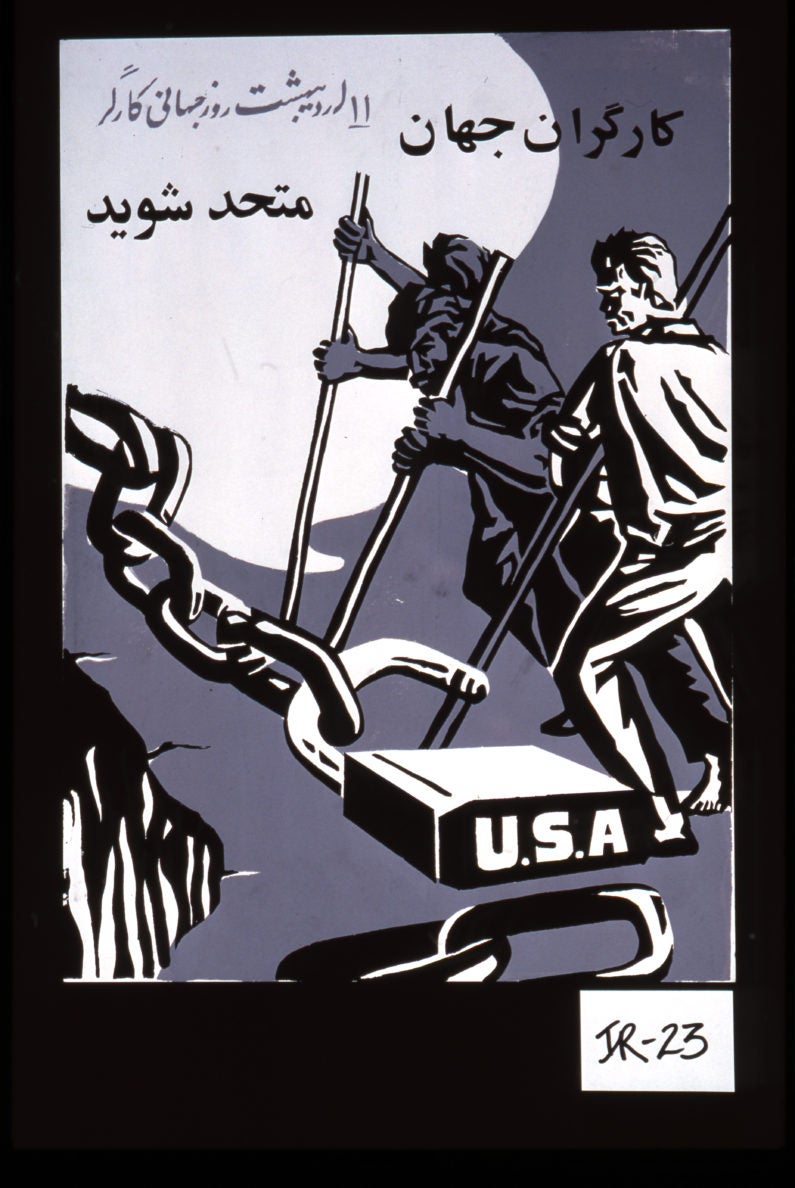Stanford Libraries, Hoover Institution gather thousands of archival materials on Iran
Stanford has acquired thousands of archives about Iran’s history, politics and culture that are held at the Hoover Institution and the Stanford University Libraries.
Stanford has amassed thousands of Persian books, official documents, letters, multimedia pieces and other materials related to Iran’s history, politics and culture.

Hoover Institution archives include posters from the 1979 Iranian Revolution. (Image credit: Hoover Institution Archives)
The collections, held at the Stanford University Libraries and the Hoover Institution Library & Archives, were expanded after the Iranian Studies program was established under the leadership of Professor Abbas Milani.
“The current regime in Iran doesn’t make it easy to collect documents and materials,” said Milani, who was personally involved in obtaining some of the archives. “That’s why it’s important for our program to obtain and preserve as many pieces of history as we can. Our plan is to digitize everything we have acquired and make it available to all future scholars.”
The newest and largest addition to the Iranian archival section at Stanford is a collection of former Iranian diplomat Ardeshir Zahedi’s writings, speeches and correspondence about Iranian foreign relations during the 1960s and 1970s. Zahedi served as an ambassador to the United States and Great Britain and as a minister of foreign affairs in Iran.
The collection also includes rare photos and papers of Zahedi’s father, Fazlollah Zahedi, who was the prime minister of Iran from 1953 to 1955. The materials are in the process of being catalogued at the Hoover Institution and will be available later this year.
“The Zahedi archives are critical for understanding Iranian politics in the last half of the 20th century,” Milani said.
Another recently acquired collection includes Iranian fiction writer Houshang Golshiri’s unpublished manuscripts and other works. Golshiri, a friend of Milani who died in 2000, is considered to be one of the most influential writers of Persian prose of the 20th century.
The collection of Golshiri’s works was donated to Stanford by his family about a year ago and is available at Stanford’s Green Library.
Stanford also received a donation of Dutch-Iranian filmmaker Reza Allamehzadeh’s films and video interviews. The collection has more than 70 hours of never-before-seen footage of interviews with some of the most prominent figures in Iran, including artists and human rights activists, Milani said.
Other highlights of Iran-related materials at Stanford include:
- The Green Library’s Islamic and Middle Eastern Collection, which contains Iranian materials, many of which have been donated by the vibrant Iranian-American communities in the San Francisco Bay Area and in Los Angeles. The collection includes more than 1,000 books, letters, photographs and rare, out-of-print early publications about the Bahá’í faith, which began in the 1800s in Persia. The followers of Bahá’í came under persecution after the Islamic Revolution and some of the records about the religion have been lost or destroyed as a result.
- Hoover’s archives containing many materials documenting Iran’s student opposition groups and leftist organizations before, during and after the Iranian Revolution of 1979. Some materials include pamphlets, flyers and other records issued by the Tudeh Party, Confederation of Iranian Students National Union and other groups. Among the materials are more than 400 posters that were used as part of propaganda campaigns during the time of the revolution.
